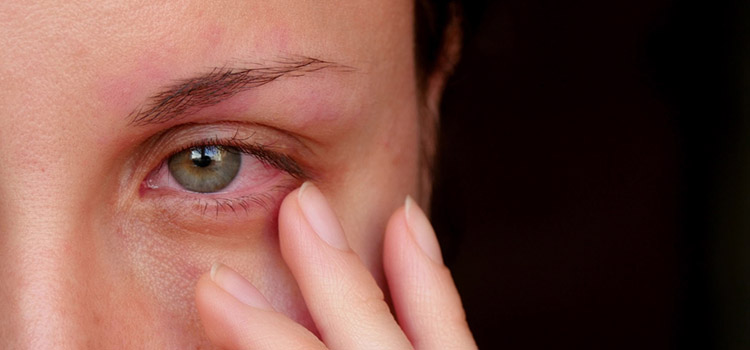Just as with everything else, your eyes change throughout your life. That’s why many common eye conditions are experienced by older adults. As the structure and function of the eyes change, risk increases for ocular infections. If you are a mature adult or caring for one, keep reading to learn about the most common eye infections.
Conjunctivitis
Widely known as “pink eye,” this common condition occurs when the tissue (i.e. the conjunctiva) that lines the eyelid becomes inflamed. This inflammation makes the small blood vessels in this area more visible, causing the eyes to appear pink or red. Symptoms of conjunctivitis include:
- Itchiness
- Redness
- Grittiness
- Discharge that crusts over
- Tearing

Keratitis
Bacterial keratitis describes a painful condition in which the cornea becomes inflamed. The cornea is the clear covering that protects the front of the eye. Inflammation happens when the cornea has been infected by bacteria, fungi, parasites, or a virus. This may occur after using dirty contact lens, for example. If left untreated, this condition can lead to vision loss. Symptoms include:
- Redness
- Pain in the eye
- Tearing
- Discharge
- Blurred or partial vision loss
- Sensitivity to light
Blepharitis
Another infection common to older adults is blepharitis, or eyelid inflammation. The tip of the eyelid where the lashes grow is typically the affected area. This may happen when the tiny oil glands in this area become clogged. This infection is often linked to dry eye in older adults, so adequate treatment can prevent dry eyes from developing. Symptoms of blepharitis include:
- Redness on base of the eyelids
- Itching
- Eyelid swelling
- Sticky, greasy-looking, scaly skin
- Sensitivity to light
- Eyelashes falling out
Ophthalmological Herpes Zoster
When shingles reactivates in the eye, a condition occurs called herpes zoster ophthalmicus. Many eye experts believe this happens when an elderly person’s immune system has been compromised for some reasons. This infection can affect any structures of the eye, causing pain and inflammation. Symptoms may include:
- Rash on forehead
- Eye pain
- Swelling of the eyelid and other eye structures
- Sensitivity to light
Spotting the Signs of Infection
Infections of the eye in mature adults tend to occur in conjunction with signs like redness, pain, itching/tingling/burning, and sudden or abnormal vision problems. If you notice any of the above symptoms, schedule an appointment to see your Kansas City ophthalmologist. Swift and effective treatment could save your eyesight.
How to Minimize Risk of Eye Infection
Proper care and cleaning of the eyes can prevent many common eye infections. Regularly change your bedding and don’t share towels or pillows. Wash your hands whenever handling contact lens and avoid touching or rubbing your eyes. If you use contact lens, clean them effectively, place them in a clean lens case, and avoid sleeping in them or using them beyond the recommended time-frame.
Also, depending on your risk for certain eye infections such as herpes zoster, your doctor may suggest vaccines to reduce the chance of serious infections.
If you do have an eye infection, it may be treated with special eye drops or medications that address the root cause of the infection (e.g. bacteria or virus).
If you’re an older adult, it’s important to help support your changing eyes and vision. Reach out to the Kansas City eye doctors at Silverstein Eye Centers immediately if you suspect you have an eye infection. Be sure to get routine eye exams as well, so your doctor can provide adequate care for your aging eyes.
Posted August 2, 2021 by Silverstein Eye Centers